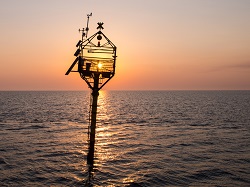Next-generation web-enabled in-situ sensor systems for the monitoring of a changing ocean
Ocean processes are biological, geological or chemical in nature and may take place in less than a second or over centuries, at a scale that extends from a few microns to many kilometres. Effectively sampling the ocean, which covers over 70 % of our planet is therefore no easy task and costly in terms of time and resources. Most sampling techniques are based on expensive laboratory analysis and field work with data collected over a limited time and area, resulting in poor sampling resolution. The EU-funded NeXOS project responded to this challenge by developing eight new low-cost, compact, multifunctional sensor systems for deployment on multiple platforms like floats, gliders, moored observing systems and vessels of opportunity, such as ferries. The sensors are based on optical or acoustic technologies and address descriptors identified by the Marine Strategy Framework Directive for Good Environmental Status (GES). Project coordinator Dr Eric Delory says: ‘They will allow scientists to measure more variables relevant to climate change, in particular those related to ocean acidification and the carbon cycle, and help research ecosystems and study biodiversity from phytoplankton to whales.’ Two of the new sensors contributed specifically to the Common Fisheries Policy, with variables relevant for an ecosystem approach to fisheries. Improved reliability and data traceability The team developed downstream services for the Global Ocean Observing System and the European Common Fisheries Policy. New interfacing capabilities of the NeXOS sensor package are meant to allow real-time data to be collected without the need for a specialist going to the actual location to install the sensors or take measurements. ‘Standard metadata descriptions make it possible to trace and easily deliver all the data collected by the NeXOS sensor package to global data brokers’ explains Dr Delory. Project partners also developed a very low-power smart anti-fouling system based on electrochlorination to increase data quality and sensor reliability for long-term deployment. The system reduced maintenance costs and improved the quality of data collected by limiting biofouling-related interference and avoided the unnecessary introduction of potentially harmful chemicals from anti-fouling agents into the marine environment. Better predictions for ocean health As a result of increasing human activities, the noise added to the marine environment is now becoming a concern and passive acoustics can help characterise and eventually reduce the impact. ‘NeXOS has developed new passive acoustics sensors in the form of smart hydrophones for the measurement of both human and biological sources and underwater noise in general, and demonstrated them on gliders, Argo floats, and fixed observing platforms’ states Dr Delory. Techniques utilising inherent optical properties like fluorescence and absorption can be used for long-term monitoring as these properties are independent from ambient light conditions. They can provide information about many components of the marine environment, which include contaminants as well as dissolved and particulate constituents of the biological carbon cycle. ‘NeXOS promoted innovation through the development of new compact low-power multifunctional optical sensors, based on fluorescence, absorption and spectrophotometric techniques and demonstrated them on deep gliders’ comments Dr Delory. ‘Deploying NeXOS sensors from ferries and on fishing nets and on cost-effective autonomous platforms will increase our capacity to sample the ocean, thus reducing uncertainties in predictions of parameters or indicators of ocean health,’ he concludes.
Keywords
NeXOS, ocean, sensor, sampling, Marine Strategy Framework Directive







